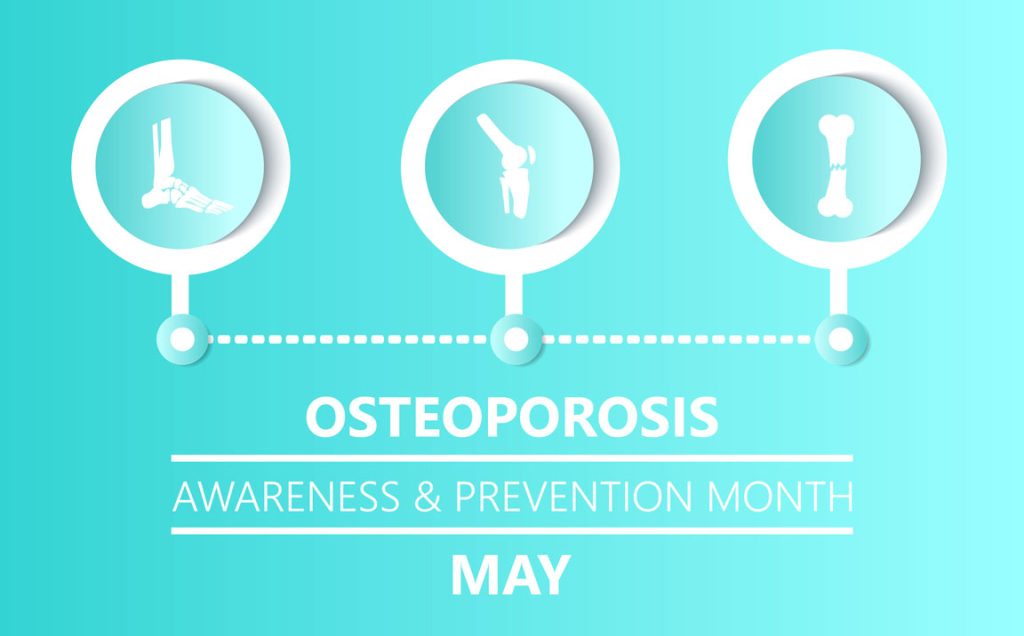Since May is National Osteoporosis Awareness and Prevention Month, this article will provide helpful information on osteoporosis and ways to prevent or mitigate its symptoms.
What Is Osteoporosis?
Osteoporosis is a bone disease that develops when bone mineral density and bone mass decreases, or when the structure and strength of bone changes. This can lead to a decrease in bone strength that can increase the risk of fractures (broken bones).
Osteoporosis is a “silent” disease because you typically do not have symptoms, and you may not even know you have the disease until you break a bone. Osteoporosis is the major cause of fractures in postmenopausal women and in older men. Fractures can occur in any bone but happen most often in bones of the hip, vertebrae in the spine, and wrist.

Causes of Osteoporosis
Osteoporosis occurs when too much bone mass is lost and changes occur in the structure of bone tissue. Certain risk factors may lead to the development of osteoporosis or can increase the likelihood that you will develop the disease.
Many people with osteoporosis have several risk factors, but others who develop osteoporosis may not have any specific risk factors. There are some risk factors that you cannot change, and others that you may be able to change. However, by understanding these factors, you may be able to prevent the disease and fractures.
Treatment of Osteoporosis
The goals for treating osteoporosis are to slow or stop bone loss and to prevent fractures. Your health care provider may recommend:
- Proper nutrition
- Lifestyle changes
- Exercise
- Fall prevention to help prevent fractures
- Medications
Nutrition
An important part of treating osteoporosis is eating a healthy, balanced diet, which includes:
- Plenty of fruits and vegetables.
- An appropriate amount of calories for your age, height, and weight. Your health care provider or doctor can help you determine the amount of calories you need each day to maintain a healthy weight.
- Foods and liquids that include calcium, vitamin D, and protein. These help minimize bone loss and maintain overall health. However, it’s important to eat a diet rich in all nutrients to help protect and maintain bone health.

Exercise
Exercise is an important part of an osteoporosis treatment program. Research shows that the best physical activities for bone health include strength training or resistance training. Because bone is living tissue, during childhood and adulthood, exercise can make bones stronger. However, for older adults, exercise no longer increases bone mass. Instead, regular exercise can help older adults:
- Build muscle mass and strength and improve coordination and balance. This can help lower your chance of falling.
- Improve daily function and delay loss of independence.
At San Simeon by the Sound, our licensed physical therapists and rehabilitation specialists work with our residents individually, providing safe and effective ways to boost physical health and carry out daily activities.
